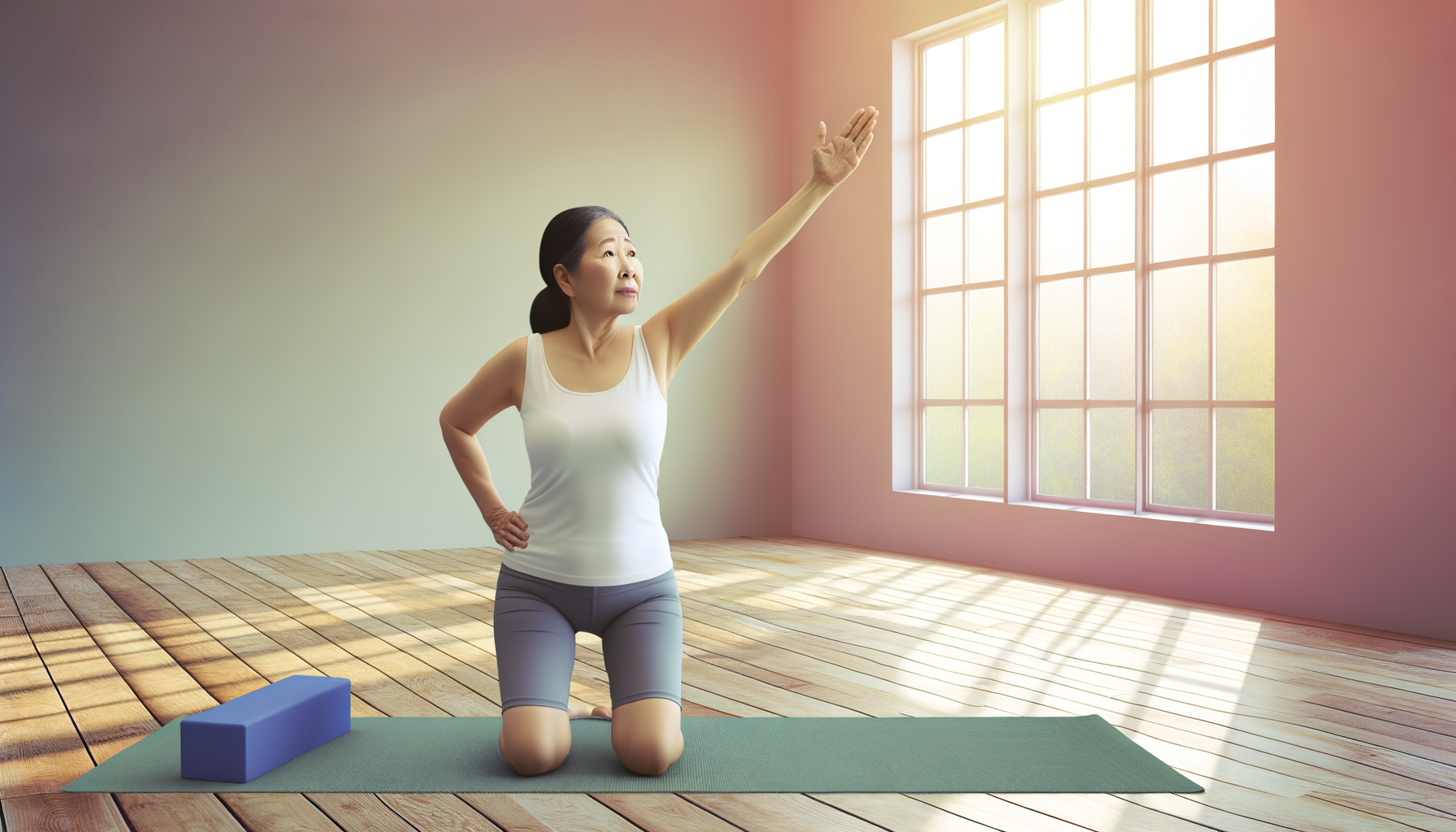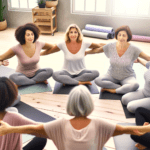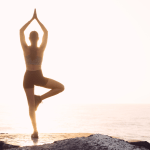Menopause is a natural biological process that marks the end of a woman’s reproductive years. This transition typically occurs between the ages of 45 and 55, when the ovaries gradually begin to produce less estrogen and progesterone, the hormones that regulate menstruation. Menopause is officially diagnosed after a woman has gone 12 consecutive months without a menstrual period. The period leading up to menopause, known as perimenopause, can last several years, during which women may experience a range of symptoms due to fluctuating hormone levels.
Common Symptoms of Menopause
The symptoms of menopause can vary widely from one individual to another, but some of the most common symptoms include:
- Hot flashes: Sudden feelings of warmth, typically around the face, neck, and chest, which can lead to sweating and redness.
- Night sweats: Severe hot flashes that occur at night and can disrupt sleep.
- Irregular periods: Changes in the frequency, duration, and flow of menstrual periods.
- Mood swings: Emotional changes, such as irritability, anxiety, or depression.
- Sleep problems: Difficulty falling asleep or staying asleep, often related to night sweats.
- Vaginal dryness: Decreased moisture production, which can lead to discomfort during intercourse.
- Weight gain: Metabolic changes can lead to an increase in body fat, especially around the abdomen.
While these symptoms are a natural part of the aging process, they can be severe and significantly impact a woman’s daily life.
Impact on Quality of Life
The impact of menopause on quality of life can be profound. Hot flashes and night sweats can disrupt sleep patterns, leading to fatigue and difficulty concentrating. Mood swings and anxiety can strain personal relationships and affect mental health. Physical changes, such as weight gain and vaginal dryness, can affect body image and sexual health. Collectively, these symptoms can diminish a woman’s overall sense of well-being and interfere with her ability to perform daily activities.
It is important to recognize that menopause is a significant life event that can require adjustments in lifestyle and healthcare. Women are encouraged to seek support from healthcare providers, family, and friends, and to explore various management strategies to improve their quality of life during this transition.

Yoga as a Therapeutic Practice for Menopause
Overview of Yoga and Its Varieties
Yoga, an ancient practice with its roots in Indian philosophy, has evolved over thousands of years into various styles and forms. From the physically demanding Ashtanga to the gentle restorative practices, yoga offers a spectrum of approaches suitable for different needs and preferences. Hatha yoga, known for its slower pace and focus on breathing and meditation, is particularly beneficial for menopausal women seeking to alleviate symptoms and improve overall well-being.
Yoga’s Popularity Among Menopausal Women
As women enter menopause, they often seek natural and holistic ways to manage the transition and its associated symptoms. Yoga’s popularity among menopausal women has surged due to its non-pharmacological approach to symptom relief. The practice not only offers physical benefits but also provides a supportive community where women can share experiences and strategies for navigating this life stage.
Potential Mechanisms of Yoga’s Benefits
The benefits of yoga for menopausal women may be attributed to several mechanisms. Firstly, yoga’s emphasis on deep, controlled breathing can activate the parasympathetic nervous system, reducing the stress response that often exacerbates menopausal symptoms. Secondly, the physical postures can improve flexibility, balance, and strength, countering the physical decline that can accompany aging. Thirdly, the meditative aspects of yoga promote mindfulness and mental clarity, which can help manage mood swings and anxiety. Lastly, certain poses are thought to specifically target the endocrine system, helping to balance hormone levels and potentially reduce the frequency and intensity of hot flashes.
Review of Research on Yoga for Menopause Symptoms
Scope and Methodology of Reviewed Studies
The reviewed studies encompass a broad range of clinical trials aimed at evaluating the efficacy of yoga in alleviating menopausal symptoms. A total of 1,306 women participated across 13 different trials, which varied in size from 30 to 355 subjects. These studies were conducted globally, with trials taking place in the United States, India, Brazil, China, Germany, and South Korea. The duration of these trials ranged from 4 to 16 weeks, with yoga sessions occurring between 1 to 14 times per week. The types of yoga practiced included hatha yoga, known for its emphasis on breathing and meditation, and Iyengar yoga, which focuses on body alignment.
Summary of Findings
Overall, the research indicates that yoga can be more effective than no treatment in reducing total menopause symptoms, anxiety, hot flashes, night sweats, and vaginal dryness. It also suggests that yoga may be more beneficial for vasomotor symptoms compared to other forms of exercise and can improve overall menopause symptoms more effectively than health education alone.
Yoga vs. No Treatment
When compared to no treatment, yoga showed a significant reduction in menopausal symptoms. Participants who engaged in yoga experienced fewer instances of hot flashes and night sweats, as well as a decrease in anxiety related to menopausal symptoms.
Yoga vs. Other Forms of Exercise
Yoga was found to be superior to other forms of exercise in managing vasomotor symptoms such as hot flashes and night sweats. This suggests that the specific components of yoga, potentially including the focus on breathing and mindfulness, may play a role in its effectiveness.
Yoga vs. Health Education
Compared to health education, yoga provided a more significant improvement in overall menopause symptoms. While health education is important for understanding menopause, yoga offers a practical approach to managing symptoms.
The findings from these studies provide promising evidence for the role of yoga as a therapeutic option for women experiencing menopausal symptoms. However, the diversity in yoga practices and study methodologies suggests a need for more standardized research to determine the most effective yoga interventions for menopause management.

Bette 100% All-Natural Relaxing Lavender Body Lotion.
Chemical-Free
Your relaxing night time body moisturizer to leave the day’s stress behind. Decompress and wish your body good night with the calming scent of lavender.
Analysis of Yoga’s Effectiveness on Specific Symptoms
Vasomotor Symptoms: Hot Flashes and Night Sweats
Hot flashes and night sweats are hallmark vasomotor symptoms of menopause, often described as sudden feelings of warmth, typically accompanied by sweating. Research indicates that yoga may offer significant relief for these symptoms. A review of clinical trials found that yoga was more effective than no treatment in reducing the frequency and severity of hot flashes and night sweats. The practice of yoga, with its emphasis on breathing and meditation, may help regulate the body’s thermoregulatory system, thus providing a natural means to manage these uncomfortable episodes.
Psychological Symptoms: Anxiety and Mood Swings
Menopause can also trigger psychological symptoms such as anxiety and mood swings. The hormonal fluctuations during this period can lead to feelings of nervousness and emotional instability. Yoga’s stress-reducing capabilities are well-documented, and its application for menopausal women has shown promise. Studies suggest that yoga can alleviate anxiety related to menopause symptoms, potentially by promoting a sense of calm and improving the body’s response to stress. The practice of yoga, particularly styles that incorporate mindfulness and relaxation techniques, can be a valuable tool for managing the psychological challenges of menopause.
Physical Symptoms: Vaginal Dryness and Joint Pain
Physical symptoms like vaginal dryness and joint pain can significantly affect the quality of life during menopause. Yoga’s gentle movements and postures can improve flexibility and circulation, which may help with joint pain. Additionally, the relaxation and stress management benefits of yoga may indirectly alleviate vaginal dryness by improving overall well-being and reducing stress-related exacerbation of symptoms. While more research is needed to fully understand the impact of yoga on these physical symptoms, the current evidence suggests that yoga can be a beneficial component of a holistic approach to managing menopause.
In conclusion, yoga appears to offer a multifaceted approach to managing the complex array of menopausal symptoms. Its potential to reduce vasomotor symptoms, alleviate psychological distress, and address physical discomfort makes it a compelling option for women seeking natural and integrative treatments during this transitional phase of life.
Limitations and Considerations in Yoga Research
Variability in Yoga Practices
The diversity of yoga styles, ranging from the gentle Hatha to the more intense Ashtanga, introduces a significant variable when assessing the efficacy of yoga for menopause symptoms. Each style varies in intensity, postures, and focus, which can influence outcomes. For instance, a restorative yoga session emphasizing relaxation may have different effects on menopausal symptoms compared to a vigorous Vinyasa flow. This variability poses challenges in standardizing interventions for research purposes and may affect the consistency of results across studies.
Sample Sizes and Study Duration
Many yoga studies suffer from small sample sizes, limiting the generalizability of findings. Small cohorts may not provide a representative sample of the menopausal population, and results may not be statistically robust. Additionally, the duration of yoga interventions in research varies widely, with some studies offering short-term programs while others extend for several months. The length of the intervention can significantly impact outcomes, as longer durations may be necessary to observe changes in menopausal symptoms.
Generalizability of Results
The generalizability of yoga research findings is often limited by the demographic characteristics of study participants. Many studies have homogenous samples, typically consisting of middle-aged, predominantly white, and well-educated women. This lack of diversity raises questions about the applicability of results to broader populations, including women of different ethnicities, ages, and socioeconomic backgrounds. Furthermore, individuals who volunteer for yoga studies may already have a positive disposition towards yoga or alternative therapies, which could introduce bias and affect the outcomes.
In conclusion, while yoga shows promise as a therapeutic intervention for menopausal symptoms, researchers must address these limitations to strengthen the evidence base. Future studies should aim for larger, more diverse samples, longer intervention periods, and standardized yoga protocols to enhance the reliability and applicability of research findings.
Do you know the three main ways that your body gets in touch with harmful chemicals with everyday products? Knowledge is Power!
The Ultimate Detox Guide will tell you how to lower your exposure to harmful chemicals!

Expert Opinions and Recommendations
Insights from Non-Involved Experts
According to James Stahl, associate professor of medicine and of the Dartmouth Institute for Health Policy and Clinical Practice, yoga may offer relief from menopausal symptoms such as night sweats and hot flashes. Stahl, who was not involved in the study, suggests that mind-body tools like yoga work through multiple mechanisms, including the remodeling of how the mind-body perceives and responds to stimuli, and helping to reset the body’s steady state. This holistic approach may be particularly beneficial during the menopausal transition, where hormonal fluctuations can disrupt the body’s equilibrium.
Yoga as a Low-Risk Intervention
Yoga is increasingly recognized as a low-risk intervention for managing menopause symptoms. Its non-pharmacological nature means it can be a first-line approach before considering medication. The practice of yoga encompasses not only physical postures but also breathing techniques and meditation, which together can help manage stress and improve overall well-being. Given the potential risks associated with hormone replacement therapy and other medical interventions, yoga presents a safe alternative that can be tailored to individual needs and fitness levels.
Guidance for Beginners in Yoga
For those new to yoga, starting a practice can seem daunting. However, experts recommend beginning with gentle, restorative classes that focus on breath coordination and simple poses. It’s important to listen to your body and avoid overexertion. Here are some tips for beginners:
- Find a Qualified Instructor: Look for a teacher experienced in guiding menopausal women through yoga practice.
- Start Slowly: Begin with basic poses and gradually increase the complexity as your comfort and flexibility improve.
- Consistency is Key: Regular practice, even if it’s just a few minutes a day, can lead to better results than sporadic, intense sessions.
- Use Props: Don’t hesitate to use blocks, straps, or cushions to help maintain balance and alignment.
- Focus on Relaxation: Incorporate breathing exercises and meditation to help manage stress and anxiety.
- Modify as Needed: Adjust poses to suit your body’s needs and limitations. Yoga is about personal progress, not perfection.
Ultimately, the goal is to create a sustainable practice that supports your health and well-being through the menopausal transition and beyond.
Conclusion and Future Directions
Summarizing the Potential of Yoga for Menopause
The journey through the various facets of yoga as a therapeutic practice for menopause suggests a promising potential. Yoga, with its multifaceted approach, addresses not only the physical but also the psychological and emotional challenges associated with menopause. The sun salutation, a series of poses flowing seamlessly into one another, emerges as a beacon of hope for those seeking relief from the discomforts of menopause, particularly hot flashes. The evidence points towards yoga’s ability to regulate the autonomic nervous system, promote relaxation, and enhance mood, which can all contribute to mitigating the frequency and intensity of hot flashes.
Encouraging Further Research
While the current body of research provides a foundation for understanding yoga’s benefits during menopause, there is a clear need for more rigorous and expansive studies. Future research should aim to standardize yoga interventions, employ larger sample sizes, and extend study durations to fully capture the long-term effects of a consistent yoga practice. Additionally, comparative studies that explore different styles of yoga and their specific impacts on menopausal symptoms would offer valuable insights into personalized therapeutic approaches.
Final Thoughts on Incorporating Yoga into Menopause Management
As we consider the integration of yoga into menopause management, it is essential to view it as a complementary strategy rather than a standalone cure. Women experiencing menopause are encouraged to consult with healthcare providers to create a comprehensive plan that may include yoga alongside other medical or lifestyle interventions. For beginners, starting with gentle yoga classes and gradually progressing can ensure a safe and beneficial practice. The low-risk nature of yoga, combined with its accessibility, makes it an attractive option for many women.
In conclusion, the potential of a daily sun salutation to keep hot flashes at bay is supported by anecdotal experiences and a growing body of scientific research. However, the true power of yoga may lie in its holistic impact on a woman’s well-being during this transformative phase of life. With continued research and an open dialogue between healthcare professionals and yoga practitioners, the future of menopause management looks brighter, more balanced, and perhaps a little more flexible.












